(click on images to enlarge)
Immigrant City (HarperCollins; 2019) is a collection of short stories by David Bezmozgis about the experiences of Latvian Jewish immigrants in Toronto and in the old country. The title story introduces a (Jewish) immigrant to a Somali Muslim who sells used car parts out of an apartment building. Two different religions and cultures interact in a way that suggests that McLennan’s Two Solitudes may not describe all differing cultures.
Curt Gesch
Telkwa, B.C.
He Held Radical Light: The Art of Faith, The Faith of Art (Farrar, Straus & Giroux 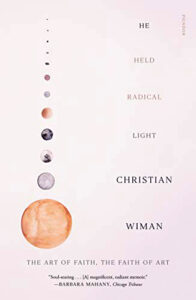 Publishers); written in 2018 by Christian Wiman, a poet who teaches religion and literature at Yale. It is a masterpiece – a shock of beauty that invites you to read and re-read every well-crafted page.
Publishers); written in 2018 by Christian Wiman, a poet who teaches religion and literature at Yale. It is a masterpiece – a shock of beauty that invites you to read and re-read every well-crafted page.
“What is it we want when we can’t stop wanting? And how do we make that hunger productive and vital rather than corrosive and destructive? These are the questions that animate Christian Wiman as he explores the relationships between art and faith, death and fame, heaven and oblivion. Above all, “He Held Radical Light” is a love letter to poetry, filled with moving, surprising, and sometimes funny encounters with the poets Wiman has known… [it] is as urgent and intense as it is lively and entertaining…” (Goodreads review).
Rusty Foerger
Edmonton, Alberta
A book should be a dream or a thought provoker that interrupts life. When reality returns you should be slightly provoked or motivated, and now walking around with a smile, grin or laugh on your lips or with tears in your eyes or creative thoughts within. Some books are called scientific but cause you to dream. Others are called fictional but leave you to contemplate science/fact-based possibilities. But moving forward a good author will leave you contemplating forward or backward along your own personal life journey. A worthwhile, valuable book should either slow you down or speed up the thoughts, reflections, emotions, and creativity within.
Charlie Grove,
Prince George, B.C.
I’ve been part of a men’s book club for nearly five years. Our book selections reveal a strong bias towards nonfiction. And perhaps as a result, I’ve noticed my own growing bias towards nonfiction in my personal reading list. In fact, I’ve tried and given up on several fiction reads this summer. After 30-40 pages, I invariably ask myself, “Do I care enough about these people or this plot to invest my time in this book?” Lately, the answer is no!
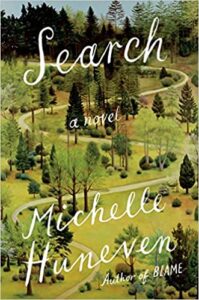 Not so with Search (Penguin Press, 2022) by Michelle Huneven. Her novel tracks the work of a small committee charged with the search for a new minister at their Unitarian church. I’ve worked with hundreds of small groups in my professional and volunteer lives. Huneven nails the twists and turns of small groups – the camaraderie, pettiness, profoundness, alliances, power plays and decision challenges – as she describes the meetings and the in-betweens. At the same time, Search chronicles the lead character’s personal search for a faith community that meets her needs in midlife. Lest you think this would be a dry account, be assured that the book is filled with humor, drama, and humanity. After 30-40 pages, I was asking myself “How does the author do this?” Search is a smart read by a skilled writer that draws the reader into an unlikely subject – the frailty of the human condition when we try to reach a decision together.
Not so with Search (Penguin Press, 2022) by Michelle Huneven. Her novel tracks the work of a small committee charged with the search for a new minister at their Unitarian church. I’ve worked with hundreds of small groups in my professional and volunteer lives. Huneven nails the twists and turns of small groups – the camaraderie, pettiness, profoundness, alliances, power plays and decision challenges – as she describes the meetings and the in-betweens. At the same time, Search chronicles the lead character’s personal search for a faith community that meets her needs in midlife. Lest you think this would be a dry account, be assured that the book is filled with humor, drama, and humanity. After 30-40 pages, I was asking myself “How does the author do this?” Search is a smart read by a skilled writer that draws the reader into an unlikely subject – the frailty of the human condition when we try to reach a decision together.
Larry Voeller
St. Paul, Minnesota
The Writing of The Silver Spindle
Beginning to write a novel in one’s later years has many advantages. In my case, it was not so much that of time as I was still working, albeit part-time. It was more the case of having had time to know or meet many more people. Obviously, the usual disclaimer applies: “persons in this story are entirely fictional” etc, but I defy any author of fiction to claim, truly, that their characters were not based upon someone real! Perhaps they can, but in truth my characters owe a great deal to those I know or have known, or even have read about. This includes myself, to a certain extent.
Added to the catalogue of people is the major part of a lifetime spent in a Walter Mitty world. As a girl who was not interested in the usual subjects expected of girls in the 1950s and 60s but rather in astronomy, science, and the Space Race between the USA and USSR, I found myself with few like-minds, especially in the small village where I lived. The solo games of ‘mystery and imagination’, plus some vivid dreams in my early teen years, provided much of the fabric for the story.
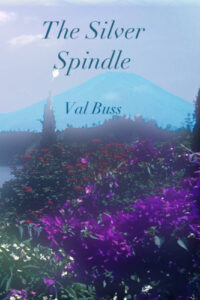 Writing in the near future has its hazards, but we still read the Greats of science fiction, even though their dates have passed. The Silver Spindle is set in 2029, but was written in 2013. It is hardly prophetic, but it does have a Sir Thomas in it who owns a fleet of liners. Sir Tom was inspired by Sir Richard Branson, who only recently has launched his cruise ships. Sadly, they do not run on glycerol1 like Sir Tom’s.
Writing in the near future has its hazards, but we still read the Greats of science fiction, even though their dates have passed. The Silver Spindle is set in 2029, but was written in 2013. It is hardly prophetic, but it does have a Sir Thomas in it who owns a fleet of liners. Sir Tom was inspired by Sir Richard Branson, who only recently has launched his cruise ships. Sadly, they do not run on glycerol1 like Sir Tom’s.
One of the central figures in The Silver Spindle, other than Maria Persson, is the alien visitor. I was keen to show that aliens are not necessarily the bad guys and that it might be ‘life, but not [quite] as we know it’, to quote from Star Trek. Geos, as the alien gets nicknamed, was built with a certain amount of humour – the archetypical hairy-chested hero of an inexpensive brand of paperback. It must be admitted that his character was also influenced by early Arnold Schwarzenegger movies.
The other principal figure in my book is Major William (Bill) Doty. He does owe much of his character to a real person who would consider himself flattered. A great deal of Bill is inspired by a professor acquaintance, aspects of whose personality echo Bill’s in regard to courage and a certain amount of panache. Much else is, naturally, fictional.
Setting a target of writing a novel is quite a challenge. I’d completed a Science PhD thesis in later years, so I knew I was capable of sticking with the task. However, I am indebted to a senior colleague while working at the University of Kent in this period for all his encouragement and, in truth, flattery. I don’t think I would have completed the mission without this support.
- At the time of writing, I had encountered a company called Aquafuels which was researching glycerol as a diesel replacement. Diesel-engined vessels are major polluters. A fuel spill of glycerol would feed the fish rather than kill them. I figured that a Branson-type character would be keen on the ecological benefits of such a fuel.
By Jennifer Valerie Oliver née Buss
(writing under the name of Val Buss)
Kent, UK
The Silver Spindle is available on Amazon.com; Amazon.ca; and Amazon.co.uk
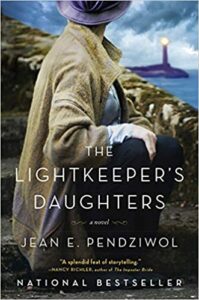 Recently our Book Club read a novel together that I had selected, and which I loved. It is called The Lightkeeper’s Daughters (Harper Perennial Press, 2018), written by Jean E. Pendziwol. The story takes place during the 20th century on an island close to the north shore of Lake Superior, near Thunder Bay, Ontario. As described by one book reviewer, “it is a story of commitment, identity, and familial loyalty”.
Recently our Book Club read a novel together that I had selected, and which I loved. It is called The Lightkeeper’s Daughters (Harper Perennial Press, 2018), written by Jean E. Pendziwol. The story takes place during the 20th century on an island close to the north shore of Lake Superior, near Thunder Bay, Ontario. As described by one book reviewer, “it is a story of commitment, identity, and familial loyalty”.
Pat Grove
Prince George, B.C.
Three books that have been insightful to understand faith from an evolutionary perspective:
- Delio, Ilia, Editor: From Teilhard to Omega: Co-creating an Unfinished Universe (Orbis Books, 2014)
- Diarmuid O’Murchu: Paschal Paradox: Reflections on a Life of Spiritual Evolution (Franciscan Media, 2022)
- Rohr, Richard: The Universal Christ (Convergent Books, 2019)
Franciscan Friar Kevin Lynch
Mount St. Francis Retreat Centre,
Cochrane, Alberta
For anyone who has been struggling with either or both of these two widely prevalent aspects of American Christianity – a White nationalist supremacy theology and a lackluster response to social justice issues – I have found inspiration and insight from the work of Sikh filmmaker, activist, author and lawyer Valarie Kaur.
I first encountered her work on Brian McClaren’s podcast titled “Learning How to See.” In a 2-part series titled “Christianity as Neighbor,” he attempts to help Christians see themselves through the eyes of non-Christians. The first podcast was with Rabbi Jill Jacobs, and the second podcast (June 10, 2022) was with Valerie Kaur. I found their 54-minute conversation full of revelations and inspiration.
Kaur is best known for her 6-minute speech at the National Moral Revival Poor People’s Campaign Watch Service at the Metropolitan AME Church in Washington, D.C. on December 31, 2016 (less than two months after Donald Trump was elected President). Her speech, which includes the quote about the darkness of the tomb and the womb, has had over 40 million views on YouTube.
Kaur is only 41, but her story has quite an arc to it already. Her stories of growing up “a little brown girl” in central California are riveting, both because of the prejudice she endured and the unrelenting attempts to convert her in the surrounding predominantly Christian culture, as well as her descriptions of positive and life-altering encounters with Christians later in life. Following the unprovoked attacks in 2001 on American Sikhs by angry citizens, because many Sikh men bore a slight resemblance to Osama bin Laden, Kaur became a national activist fighting prejudice, while earning a Yale law degree and a theology degree from Harvard.
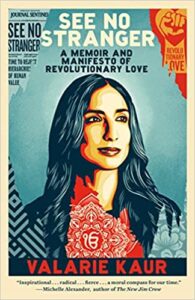 In 2017 she realized that she was exhausted from confronting hate, and so spent a year living outside the U.S. reading and writing. She returned convinced that a positive message of revolutionary love was the only way to make enduring change without burning herself out. Her book, entitled See No Stranger: A Memoir and Manifesto of Revolutionary Love (One World Publishers, 2021), and the curricula on her Revolutionary Love Project website are visionary and practical.
In 2017 she realized that she was exhausted from confronting hate, and so spent a year living outside the U.S. reading and writing. She returned convinced that a positive message of revolutionary love was the only way to make enduring change without burning herself out. Her book, entitled See No Stranger: A Memoir and Manifesto of Revolutionary Love (One World Publishers, 2021), and the curricula on her Revolutionary Love Project website are visionary and practical.
As an Episcopalian I have been drawn to two online resources: Presiding Bishop Michael Curry’s Way of Love: Practices for a Jesus-centered Life as well as Valarie Kaur’s Revolutionary Love Compass, with its ten core practices of revolutionary love, complement and, as McClaren stated in his podcast, “operationalize” Jesus’ Love Commandments.
As Buddhism has played a vital role in opening so many prominent Christians’ hearts to a deeper understanding of Christ’s gospel message, I feel that Kaur’s sharing of her Sikh faith and culture has the same potential at this unique juncture in our American story.
Finally, here is a link to a conversation between Kaur and Parker Palmer, which is full of warmth and wisdom (as he approached 80 and was still clear as a bell!)
Scott Christian,
Marshall, Virginia
My favourite author: My favourite author is Canadian writer Louise Penny. She has written 17 mystery books featuring Inspector Armand Gamache from the fictional town of Three Pines. Book #18 in the series will be out in November 2022. Louise has also co-authored a book with Hilary Clinton called State of Terror.
First book I ever checked out of a library: I remember that the first book that I checked out from my tiny hometown library was A is for Annabelle by Tasha Tudor when I was 6 years old. I learned my alphabet and I always wished I had a doll like Annabelle. I think I checked it out a lot, and I eventually bought a copy for my daughter. Still loved it as an adult.
My favourite type of mystery book: The ‘cozy mystery’, especially those related to books, bookstores, libraries, and librarians. Here are a few of the cozy mystery series that are my favourites:
1. Bookmobile Cat Mystery Series by Laurie Cass
2. Lighthouse Library Mysteries by Eva Gates
3. Book Lover’s B&B Mysteries by Victoria Gilbert
4. Aurora Teagarden Mysteries by Charlaine Harris (some Hallmark movies were based on the characters from these books)
5. Booktown Mystery Series by Lorna Barrett
6. Scottish Bookshop Mysteries by Paige Shelton
7. Mystery Bookshop Series by V.M. Burns
8. Sherlock Holmes Bookshop Mysteries by Vicki Delany
My 2 favourite websites for finding cozy mysteries are:
Cozy-mystery.com
Cozy-mysteries-unlimited.com
Local used bookstore – we have a new used bookstore here in St. Thomas, Ontario called Lockwood Books operated by a young couple who are awesome. The shop has been open a year and they are a welcome addition to our community. They can be found on Instagram and on Facebook .
Wendy Tippin
St. Thomas, Ontario
The book I’ve loved for decades is The Life of St. Francis by Thomas of Celano. Brother Thomas was the first biographer of St. Francis of Assisi. He was born in the town of Celano, Italy. Francis was canonized on July 16, 1228. About this time Pope Gregory IX commissioned Brother Thomas to write his first Life of St. Francis. In 1244 Brother Thomas was asked to write a second life of St. Francis. The works of Brother Thomas are foundational writings for information about St. Francis. Many authors use Thomas’ Life of St. Francis as a basis for their storyline.
Another two books I would recommend are: The First Franciscans and the Gospel by Duane V. Lapsanski (Franciscan Herald Press, 1976); and Francis of Assisi: Return to the Gospel by Eloi Leclerc, OFM – translated into English by Brother Richard Armandez, FSC (Franciscan Herald Press, 1981). Francis of Assisi exemplified the return to the Gospel. These two books assist us in delving into the spirituality and life of Francis…his love of Jesus, his humanity, and his fraternity. The Gospels and the Life of St. Francis are complementary.
And finally, I would like to recommend the book entitled The Life of St. Francis by Paul Sabatier, published in 1893. Paul Sabatier (1858-1928) was a Huguenot Pastor in France who is credited with the revival of a worldwide interest in St. Francis. His book Vie de S. Francois d’Assise is renowned and has been translated into English.
Friar Edward Debono, Franciscan Friars Conventual
and J.C. Trottier, Secular Franciscan
Kingston, Ontario
For We Who Are Children of the Book
According to my Grade Two teacher, Miss De Cario, as kind as she was pretty, I marched up to her desk with a carefully printed Story one day. I wanted help to put hard covers on it and to have enough extra blank pages to draw and colour pictures to go with my Story. Alas, this priceless manuscript is long since lost to a likely fate as fire-starter. It never did get the longed-for hard covers although it occurs to me now, sixty-some years later, a repurposed cardboard box covered in thick tempura paint might have done the trick. Sadly, Grade Twos were stuck with wax crayons in that era and only older children with refined motor skills and impulse control were given access to messy water and cans of powdered tempura paint. The story of my urge to create a book from scratch, its form as well as the content, a one-off effort as photocopiers were not yet invented, was one I finally heard many decades afterwards. It will live forever in my head and heart.
How I loved stories! We had no electricity, so therefore no TV either and we lived hours away from a movie theatre. My parents were fairly rare in our north Peace River homesteading community in that they had a small bookcase with two shelves packed with books. No picture books though, just hardcover books for adults. Both my parents loved to read but what I remember most are their stories about growing up in Holland and Wales. Then stories about the early days, the barn fire, Mom saving the horses, the bear stalking the calf, Dad saving the calf (not, however, the bear) and Dad trading his homemade bread and tea with the Beaver (now Dane-Zaa) hunters for fresh deer meat.
At school, I deciphered the dictionary syllable by syllable and attempted to read a couple of ancient unmemorable textbooks, at least one with chunks of pages missing, from our two-room school shelves. Dick and Jane were shiny yet strangely dull children indeed. We did not have a school library that I can remember at all but somewhere around Grade Three or Four, the Bookmobile came into our lives. A massive white vehicle was driven by a soft-spoken librarian based in Dawson Creek, Mr. Howard Overend, who braved our gravel and gumbo roads twice a year, in late fall and early spring. What a treasure trove there was inside on the upward-tilted shelves from floor to ceiling, rows upon rows of new books, whole series of books about fearless girl detectives and boys who stowed away on sailing ships. Best of all, there were books about horses that ran at a gallop not a bone-jarring trot, horses so noble and clever I was able to transform our plodding brown workhorses into coppery palominos and flashy black and white pintos, descendants of imported Spanish Arabs favoured by brave Comanche horsemen escaping the wrath of fearsome Apache warriors. We were allowed to pick three books each, and after reading the entire temporary school library at least twice in the ensuing months between visits, the beloved Bookmobile would finally lumber back down our road again. I could have picked at least nine books but three it was and we were guided toward our age group shelves and given what seemed like three minutes each to make a potentially life-altering decision!
I read, and comprehended sixty percent of the English and French, if that, of Marie Antoinette’s biography on my parents’ bookshelf when I was in Grade Three. I was not allowed to read Frank Yerby, but Thomas B. Costain’s maritime adventures were okayed by the in-house censors. My Aunt Rose in Wales began sending us British newspapers (and the pale orange Football Echo) as well as children’s comics that prominently featured girls riding in gymkhanas and dedicated ballet dancers. I loved them all. And speed-read Frank Yerby’s two Southern plantation epics whenever my parents were both working outside. I could not see what the fuss was all about so obviously any salacious content went sailing right over my ten-year-old head. Finally, my Aunt Vi gave us the complete set of Olive De Beaupre Miller’s My Book House, all in my preferred hardcovers, with green covers for the younger books and deep blue for the older, more sophisticated reader. Years later, the set of twelve ended up with the sibling who produced children first but they were scribbled on, torn up, or went missing.
Flash forward a decade though when my husband and I created and ran a village bookstore for eight years, by which time I had published four books. Computers had transformed our lives even more than Walter Farley’s The Black Stallion had worked its literary magic on our old Percheron workhorses. An antiquarian book dealer found me a complete, mint condition set of My Book House, most of which were already too young for our son to enjoy. He was devouring all the Swallows and Amazons series and the first of the Harry Potters shortly afterwards. I wasn’t overly crushed. I’d bought them for myself, after all! I know I will read every single volume again, old-fashioned though many of them undoubtedly are, highly likely to be discarded by today’s discerning librarians armed with Masters degrees.
But I will savour them all in my imaginary hammock, once I stop whirring around trying to write more stories of my own. With hardcovers, if you please.
Caroline Woodward
New Denver, B.C.


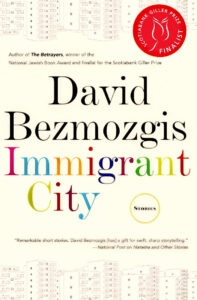

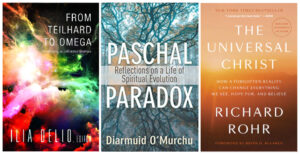
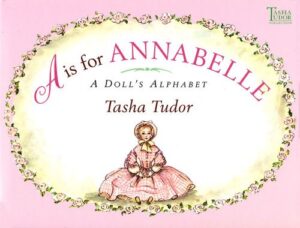
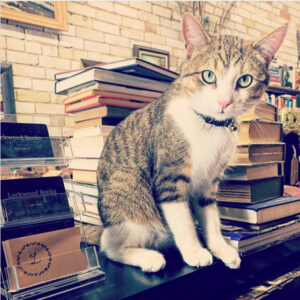
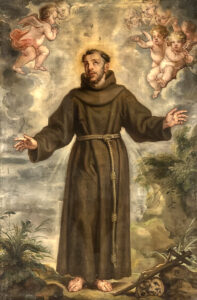
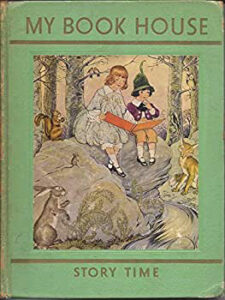






Hi, Caroline. I loved your article about your early reading world. What fun to see how your desire to read developed despite the lack of reading material and censorship. As a side note, I didn’t know you lived in New Denver. My father was born in the Lemon Creek area on Valhalla Ranch. My husband and I also lived in Nelson recently as well. You are in a beautiful area!